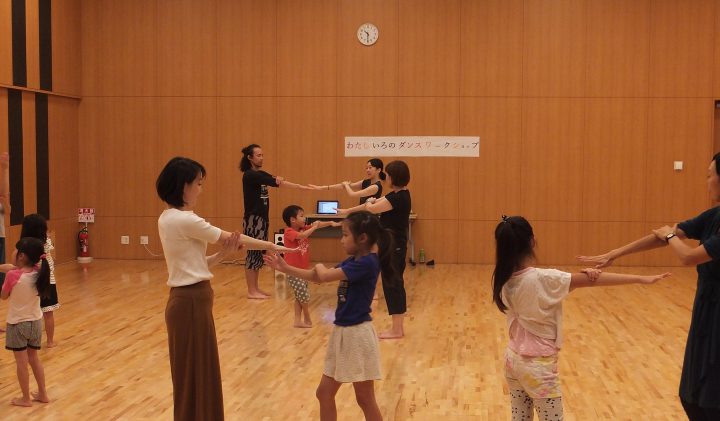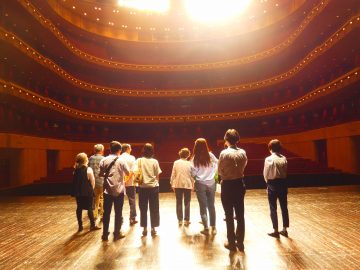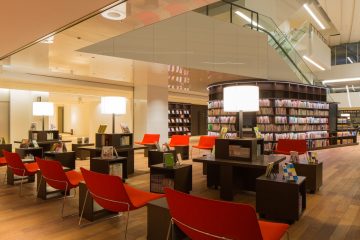Every three years, contemporary art from around the world comes to Yokohama Yokohama Triennale 2017 Islands, Constellations and the Galapagos
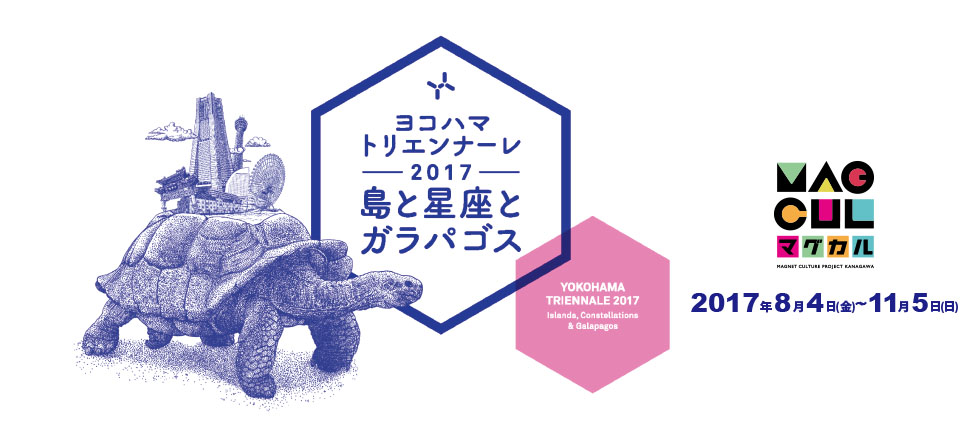
The must-see works at the Yokohama Museum of Art

Ai Weiwei, Safe Passage, 2016, Reframe, 2016
Yokohama Triennale 2017 Exhibition view (Yokohama Museum of Art) Photo: Kato Ken © Ai Weiwei Studio Photo courtesy of Yokohama Triennale Organizing Committee
On the exterior wall at the entrance to the Yokohama Museum of Art, there is a large-scale installation related to the refugee issue that Ai Weiwei, a contemporary artist born in Beijing, China, is working on himself. Ai Weiwei is an artist who is always involved in the social situation he finds himself in, and is promoting activities that seem to expand the concept of art. This is made up of life jackets and lifeboats actually worn by refugees who crossed the Mediterranean Sea from the Middle East and North Africa and were washed up on the island of Lesbos. You can almost hear the silent screams from the horde of life jackets worn by people in extreme situations where life and death were at stake.
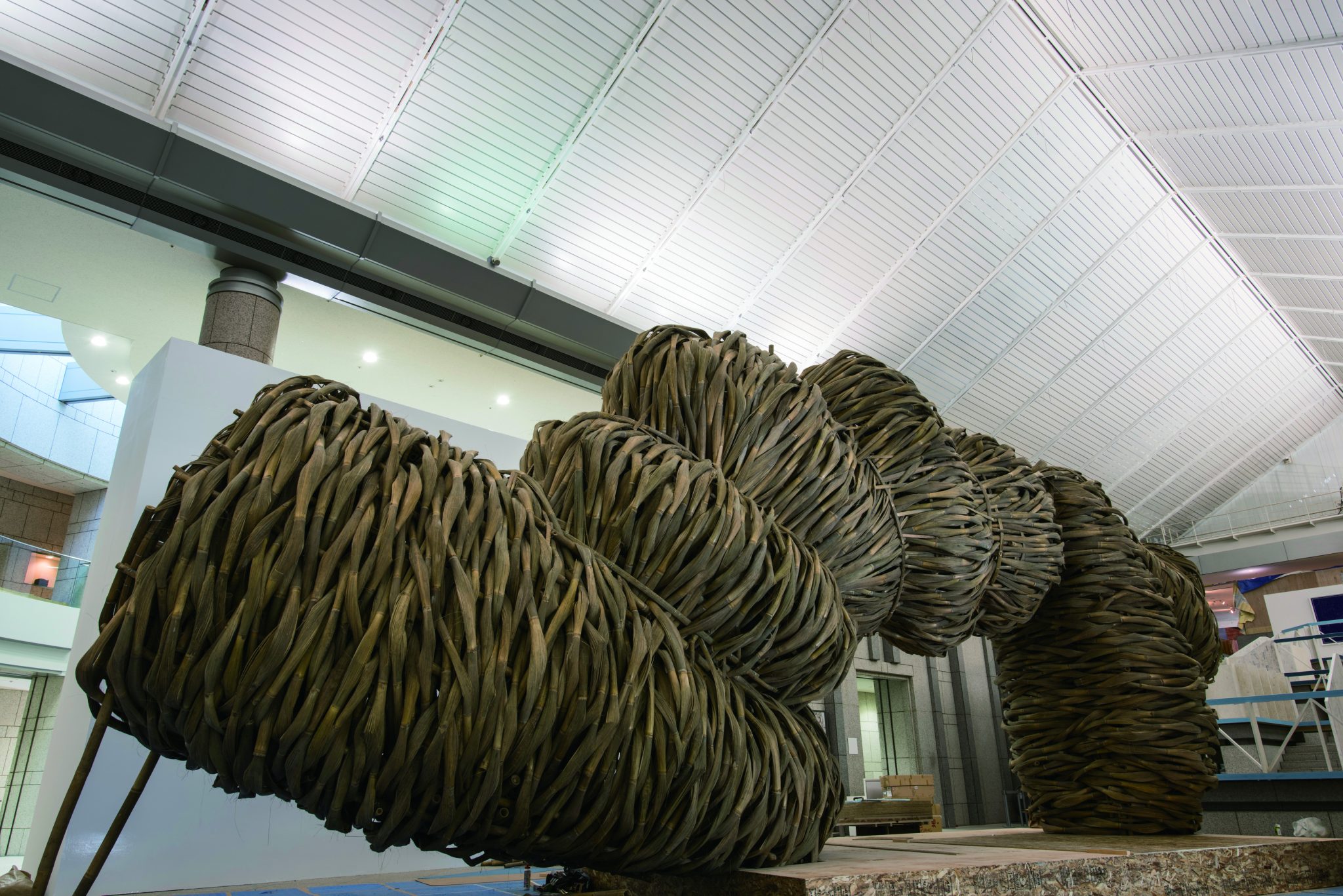
Djoko Avianto, The Boundary Between Good and Evil is Terribly Shrunken, 2017
Exhibition view from Yokohama Triennale 2017. Photo: Yuichiro Tanaka. Photo courtesy of the Yokohama Triennale Organizing Committee.
Just past the entrance, in the Grand Gallery, you are greeted by a giant bamboo installation resembling a shimenawa, an ancient Japanese motif. This piece was created by Joko Avianto, born in East Java, Indonesia, who has been studying the traditional culture that is being lost in his country and the coexistence of humans and nature. The artist himself used about 1,500 bamboo stalks from his native country and wove them together using his own unique technique to create the piece. It is quite large and has a strong presence even when viewed from the second floor.
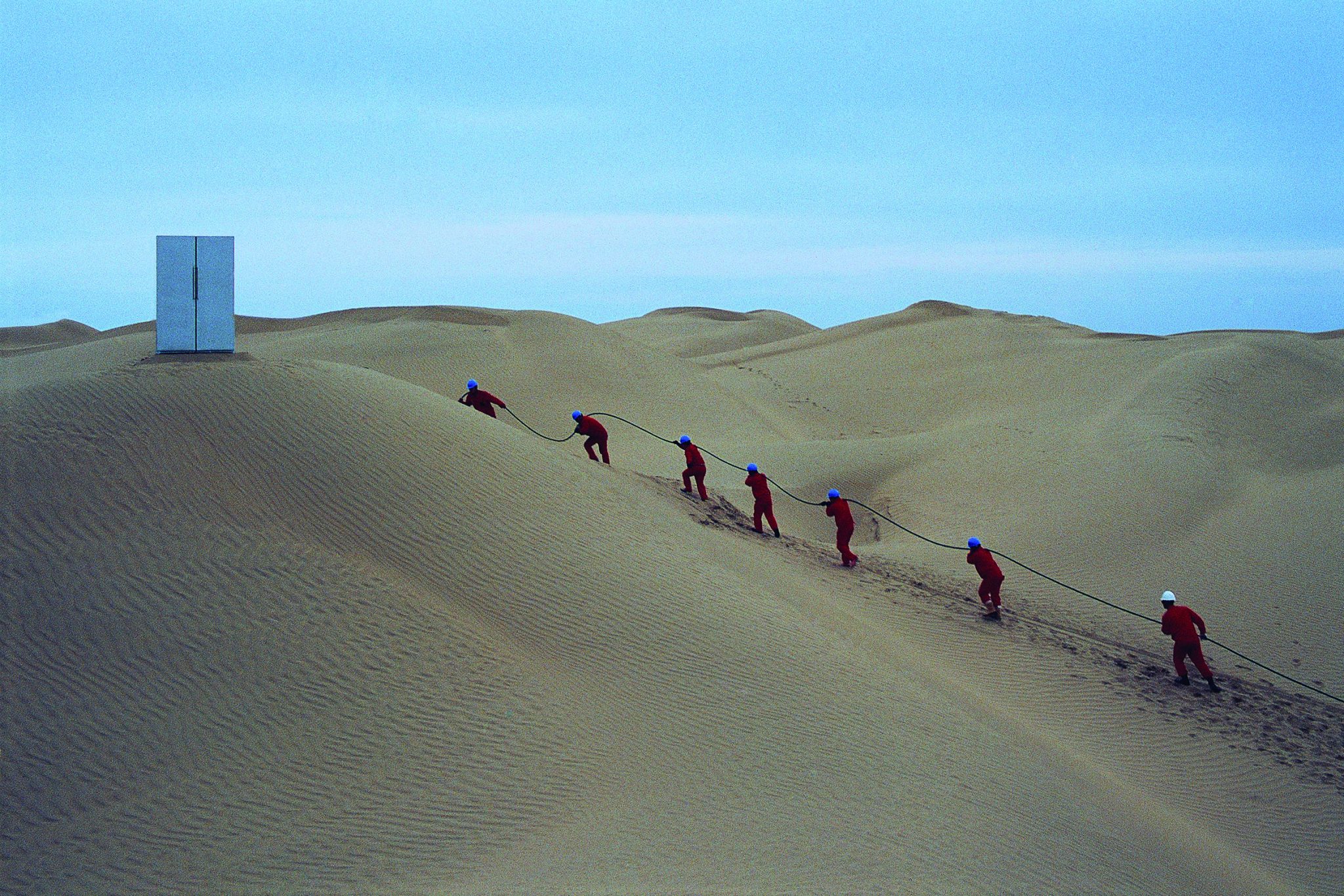
Zhao Zhao, Project Taklamakan, 2016 Image
Zhao Zhao (Zhao Zhao), a young artist from the Xinjiang Uyghur Autonomous Region of China, is being introduced in Japan for the first time, and his work tackles the various problems facing modern China head-on. His work, "Project Taklamakan," is a video of the artist transporting a giant refrigerator to the middle of the Taklamakan Desert, the second largest desert in the world and the artist's hometown, wiring it up, and drinking cold beer. The 100km of electrical wires used in the work are also on display, and the viewer is reminded of the isolated state of modern life in the vast desert.
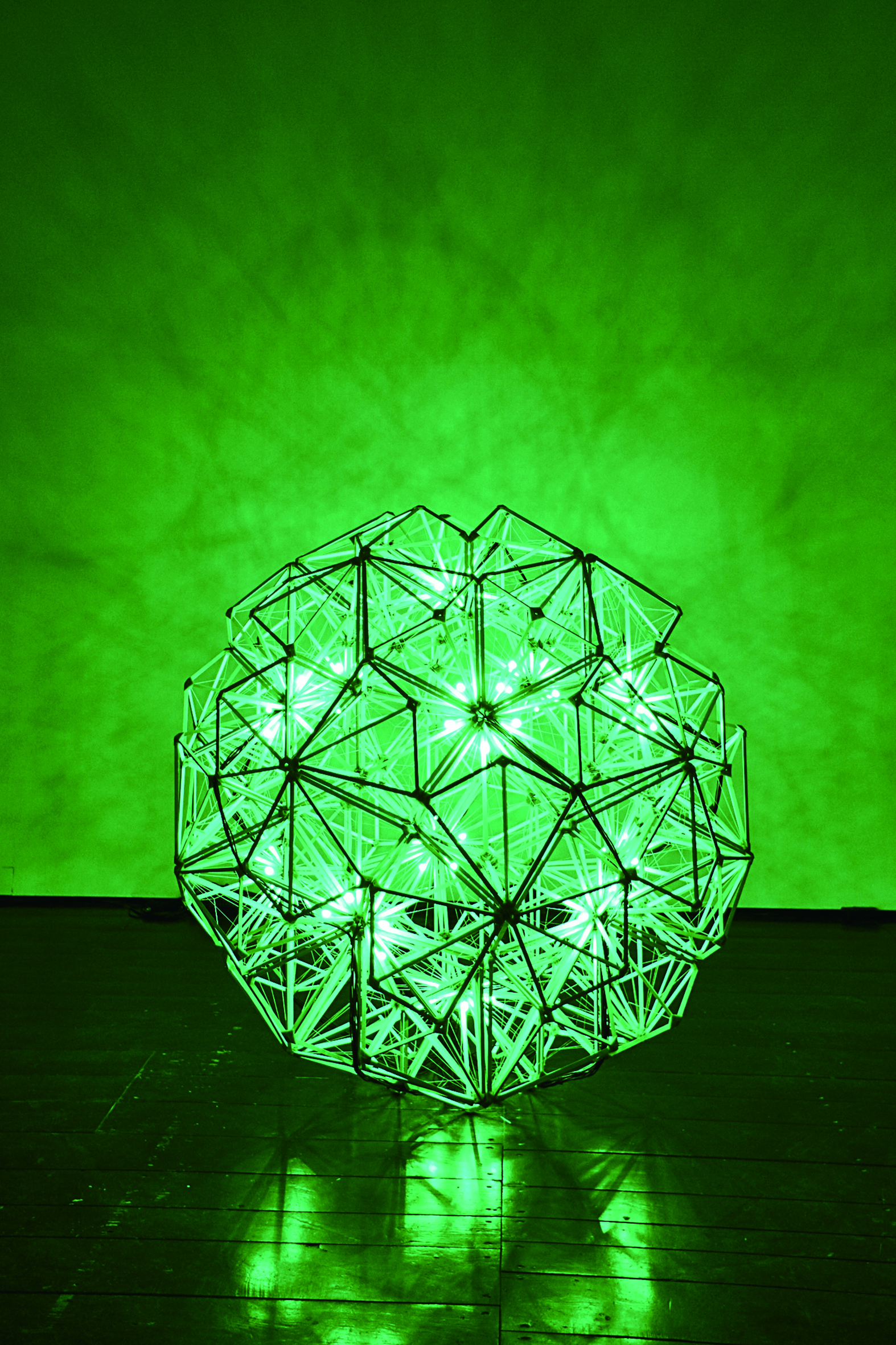
Olafur Eliasson "Green light─Artistic Workshop" 2016 Co-produced by Thyssen-Bornemisza Art Contemporary Photo: Sandro EE Zanzinger / TBA21, 2016 ©Olafur Eliasson
Don't miss the works of Olafur Eliasson, a renowned artist born in Copenhagen, Denmark, who is one of the most important figures in the contemporary art scene. The "Green Light Artistic Workshop" is a workshop launched with the aim of supporting refugees and immigrants, and has been held in Vienna, Houston, and Venice. Through the act of refugees and people unable to return home assembling a green light (green traffic light) that serves as a light of hope together with staff, the workshop aims to encourage a wider range of people to think about and share the meaning of connecting to society and the meaning of coexistence.
New "Yokohama"-related works unveiled at Yokohama Red Brick Warehouse No. 1
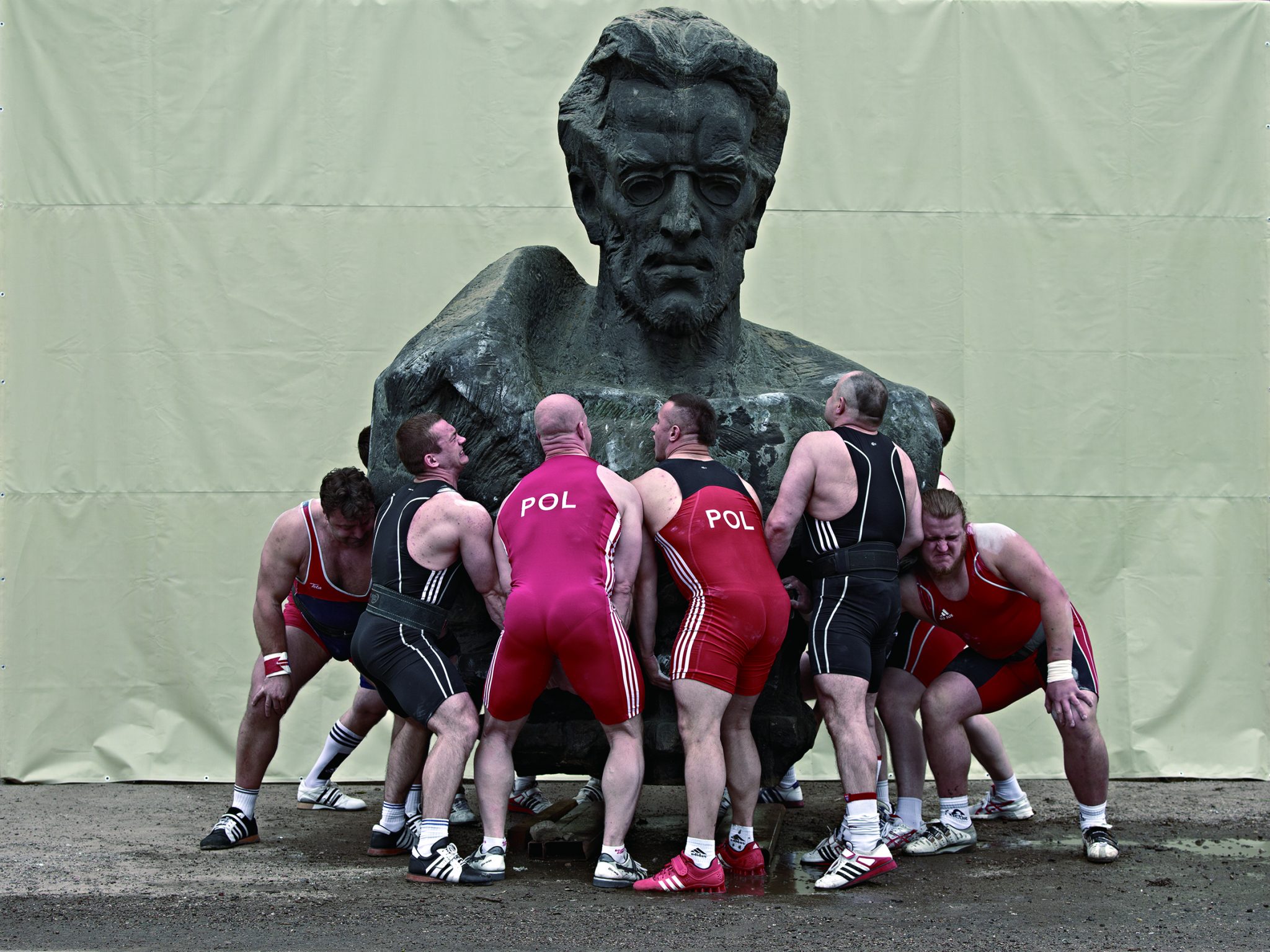
Christian Jankowski, History of the Heavyweights, 2013 Photographer: Szymon Rogynski Courtesy: the artist, Lisson Gallery
Christian Jankowski, a German-born artist known for his humorous works, has presented a triptych that comments on the relationship between the body and public sculptures. The video shows a current member of the Polish national weightlifting team attempting to lift a sculpture of a historical figure in Warsaw, and a masseuse massaging a public sculpture in Yokohama in an attempt to improve the "flow of energy" in Japan ahead of the Olympic Games, and visitors can actually watch these videos while lying down or sitting on treatment beds and chairs.
Another interesting piece is a video work by Tokyo-born Ujino Muneteru, in which household appliances and modified electric guitars move and make sounds, creating a theatrical space. The setting is the everyday life of post-war, industrialized 20th century Japan, and the artist himself narrates in English how individuals face, connect to, and reconstruct the materialistic society. The dispassionate descriptions of the situation, as the video plays, highlight the present Japan in which we live and the existence of an increasingly homogenized world.
The works are also on display in the basement of the Yokohama Port Opening Memorial Hall, which is normally off-limits to the public.
The Yokohama Port Opening Memorial Hall celebrated its 100th anniversary this year and is currently designated as an Important Cultural Property of Japan. You can view the artworks in the basement, which is usually off-limits to the public. In the moldy, dark basement, a Godzilla made from recycled materials by Shizuoka-born Yukinori Yanagi awaits. The Godzilla, glaring at you with his big eyes from the rubble, is impressive. Other works include one that uses LEDs to represent Article 9 of the Constitution and one that uses the Japanese flag as a motif to crumble, raising questions about the "present" of Japan. If you don't want to walk much, it might be a good idea to start your visit at the museum, which is located right next to Nihon-Odori Station on the Minatomirai Line. From here, you can walk a few minutes to BankART Studio NYK and then take a bus to other venues.
Free buses will also be available between the venues.
A free bus decorated by artists runs between the Yokohama Museum of Art and the Yokohama Red Brick Warehouse every 30 minutes (every 15 minutes during the day on Saturdays, Sundays, and holidays). There are also buses that connect the Koganecho Bazaar venue and BankART Studio NYK, so be sure to check the operating schedule and enjoy your art tour.
Install the free audio guide app
If you install the "Yokohama Triennale 2017 Audio Guide" app on your smartphone, you can listen to guides to the works and interviews with artists. Free Wi-Fi is available at each venue, so please download the app and make use of it.

Mister, "It's like a hole has opened up in my heart, the evening of Tokyo, the city I know" 2016
©2016 Mr./Kaikai Kiki Co., Ltd. All Rights Reserved.Courtesy Perrotin
Places where free Wi-Fi is available
・Yokohama Museum of Art (Grand Gallery, exhibition room, shop, cafe)
・Yokohama Red Brick Warehouse No. 1 (2nd and 3rd floors)
・Yokohama Port Opening Memorial Hall (basement)
Be sure to check out the art programs you can enjoy alongside Yokohama Triennale 2017
As a program that can be viewed with the "Set Ticket," let us first introduce "BankART Life V-Sightseeing" held at BankART Studio NYK. The theme of this event is a group of large-scale artworks that utilize the venue's large space and an urban detour to the Koganecho district. In addition, "Koganecho Bazaar 2017 Double Façade: Multiple Ways to Meet Others," held at the Koganecho Bazaar venue, is an art festival with themes of the relationship between art and the community and exchange with Asia. In addition to exhibiting works, a variety of content is being developed, including the disclosure of the production process and participatory programs.
In addition, the YCC Yokohama Creative City Center will host an exhibition by artist Kengo Kito called "YCC Temporary," while the Yokohama Paratriennale 2017 and Smart Illumination Yokohama 2017 will be held around Zou-no-hana Terrace. The Yokohama Paratriennale is an art project that aims to realize a society of coexistence by bringing together a diverse range of citizens and artists, regardless of whether they have a disability or not, to engage in artistic activities on an equal footing. Smart Illumination is an international art event that combines environmental technology with the creativity of art, and from this year will be coloring the nights of Yokohama in collaboration with the city's illuminations.
In the waterfront area of central Yokohama (from the Ooka River to Zo-no-hana Park), an outdoor art program is held as part of the "Creative Waterway - A creative hub connecting rivers and the sea," where a variety of artworks are displayed along the waterfront of the river or sea.
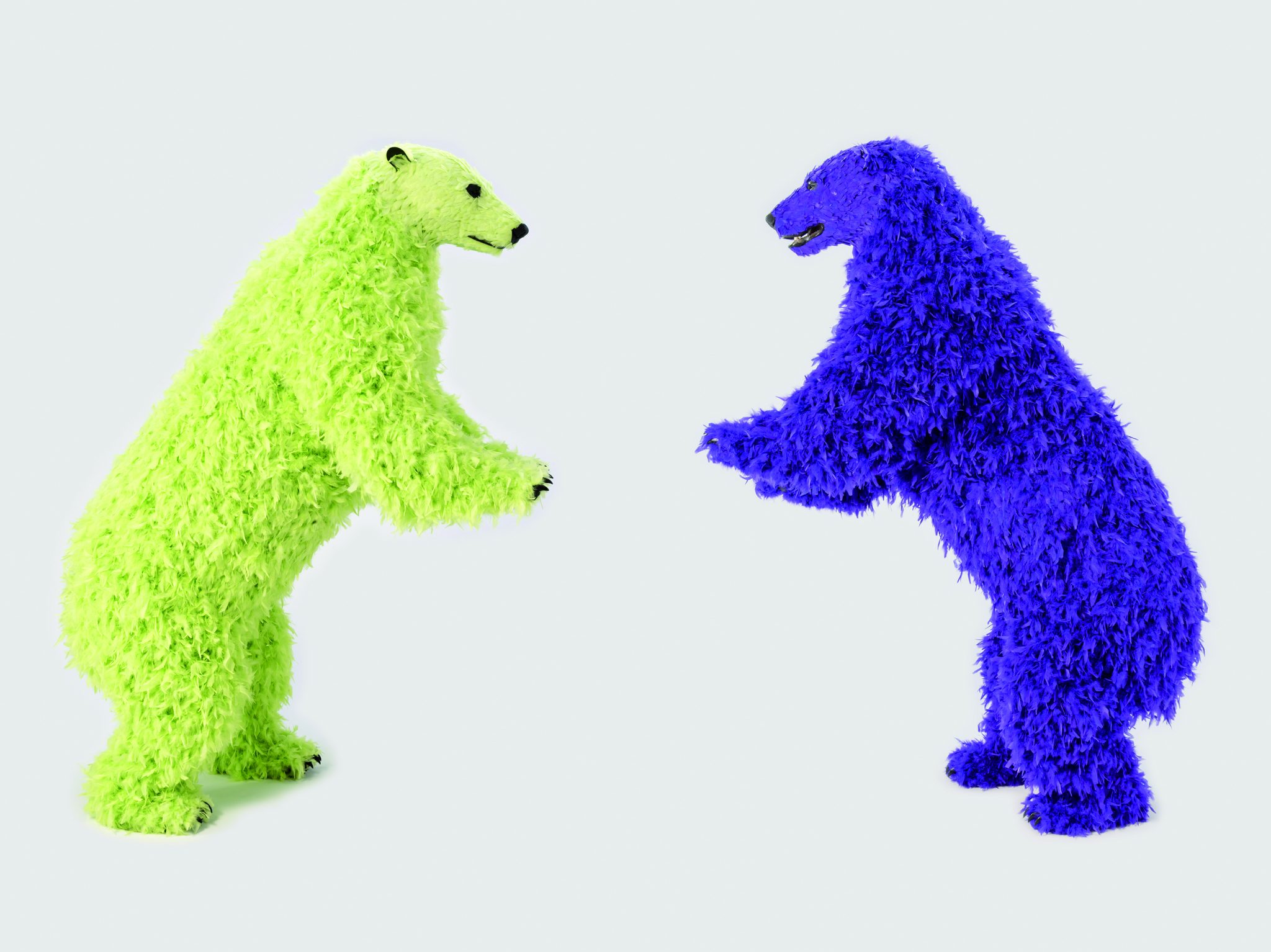
Paola Pivi, "I and I (We Must Stand Up for Art)" 2014 Photo: Guillaume Ziccarelli Courtesy of the Artist & Perrotin
Many people look forward to the Yokohama Triennale, which takes place once every three years and allows you to take a tour of art all over Yokohama. By letting yourself go and enjoying contemporary art from around the world without overthinking it, and simply spending time feeling the artworks, you may find that your values change from tomorrow onwards. There are many more art programs that we could not introduce this time, so please check the official website for details.
